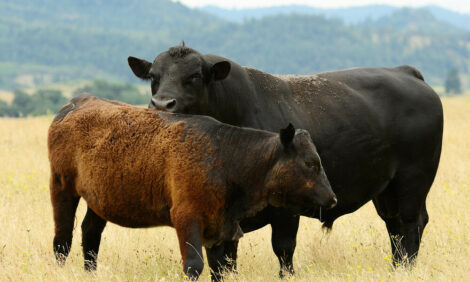



USDA Assures Customers over BSE Case
US - The USDA and Food and Drug Administration (FDA) continue to assure consumers that existing safeguards protect food supply, after Bovine Spongiform Encephalopathy (BSE) was confirmed earlier in the week.
USDA’s Animal and Plant Health Inspection Service released the following update on the BSE detection announced earlier this week:
"On 24 April, USDA confirmed the nation’s fourth case of BSE in an animal that was sampled for the disease at a rendering facility in central California. This animal was never presented for slaughter for human consumption, so at no time presented a risk to the food supply, or to human health in the United States. As the epidemiological investigation has progressed, USDA has continued to communicate findings in a timely and transparent manner.
"As a result of USDA’s ongoing epidemiological investigation, more information about the history and age of the animal is now available.
"The animal in question was 10 years and seven months old and came from a dairy farm in Tulare County, California The animal was humanely euthanized after it developed lameness and became recumbent. The animal’s carcase will be destroyed.
"It is important to reiterate that this animal was never presented for slaughter for human consumption, did not enter food supply channels, and at no time presented any risk to human health.
"USDA is continuing its epidemiological investigation and will provide additional information as it is available.
"The positive animal was tested as part of targeted BSE surveillance at rendering facilities. Samples were sent to the California Animal Health and Food Safety Laboratory for testing and forwarded to the National Veterinary Services Laboratories (NVSL) on 20 April for confirmatory testing. APHIS announced the confirmed positive finding 24 April.
"The US has a longstanding system of three interlocking safeguards against BSE that protects public and animal health in the US, the most important of which is the removal of specified risk materials – or the parts of an animal that would contain BSE should an animal have the disease – from all animals presented for slaughter in the United States.
"The second safeguard is a strong feed ban that protects cattle from the disease. The third safeguard—which led to this detection— is our ongoing BSE surveillance programme that allows USDA to detect the disease if it exists at very low levels in the US cattle population and provides assurances to consumers and our international trading partners that the interlocking system of safeguards in place to prevent BSE are working."
The strength of the US's surveillance system is also supported by The American Meat Institute (AMI).
The AMI Executive Vice President, James H. Hodges, commented: “US beef products are among the safest in the world and USDA’s announcement confirms that the US animal disease surveillance system works to protect our herds and the public. Certainly, BSE news can generate concerns and questions, but the facts show that our animal disease prevention system is strong and our beef is safe. Consumers can continue to enjoy their beef with confidence.”
Mr Hodge also stated that that strain of BSE that was found in the animal is a rare form, and not one which is associated with infected feed.
TheCattleSite News Desk


